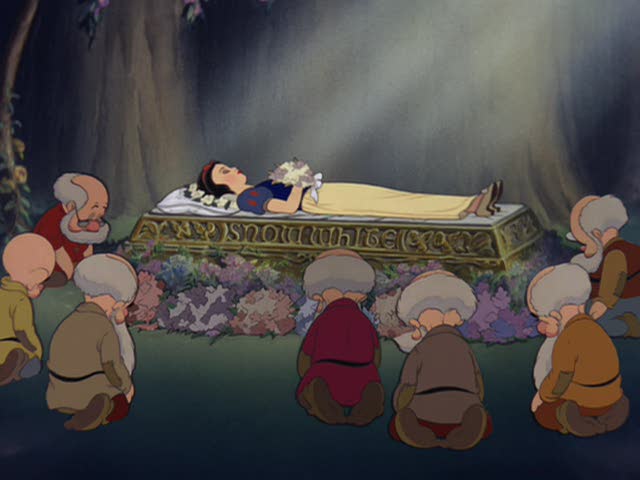We’ve all been struck with insomnia at one point in our lives. The seemingly endless tossing and turning has plagued people since the beginning of time. And our ancestors ate some pretty strange things to avoid sleepless nights. Some of these food remedies are tried and true, whereas others are more likely to make you violently sick (or worse). So before taking any tips from those who lived in the olden days, consult your doctor — or you may just land yourself in the ER.
Insomnia and anxiety go hand in hand. It’s those anxious, unceasing thoughts that love to keep us up at night. I can’t believe I said “Bye, I love you” to my Uber driver. Did I leave the oven on? What if I run into so-and-so on my way to work tomorrow? The string of worrisome thoughts are endless.
Luckily, most of the below methods that actually do work will not only help you sleep, but quell your anxious thoughts.
Of course, if lack of sleep is a serious issue you’re dealing with, and herbal remedies or healing foods aren’t working for you, we highly suggest you talk to your doctor about other methods that can help cure your insomnia.
1. Blue Ling
The ancient Celts would supposedly use an extract from the deep-sea Blue Ling fish to help their bodies react and adapt to physical and emotional stressors. Of course, the Celts may not have been aware of the scientific health benefits of eating Blue Ling, but they probably caught on to the fact that the fish made them feel good.
Blue Ling fish and several roots and herbs contain adaptogens, which are substances that aid the brain similarly to antidepressants.
They curb stress and anxiety, improve memory, and better sleep quality.
2. Lettuce

Ancient Egyptians supposedly brewed teas made with wild lettuce to help them sleep. Although it is related to the same lettuce we get from the supermarket, wild lettuce is sometimes called “opium lettuce” due to its sedative effects, and was often used by physicians in the 19th century when opium was not readily available.
The Egyptians would harvest lactucarium from the wild lettuce, which is a milky substance secreted from the stems that helps one drift off to sleep.
The lettuce that we buy for our salads does not contain the same amount of lactucarium. However, some holistic practitioners say that boiling a lettuce tea can help a person ward off insomnia.
3. “Dwale”

“Dwale” is a medieval English concoction that was used as an anesthetic, and was administered, more specifically, “to make a man sleep whilst men cut him,” as stated in a centuries-old text. Although dwale was dangerous, it was used often and could be easily made by the average housewife.
To make a batch of dwale, one would mix together several spoonfuls of bile from a boar (or a sow, if a woman was ingesting the dwale), hemlock juice, wild neep (bryony), lettuce, opium, henbane, and vinegar.
“Mix them all together and boil them a little and put them in a glass vessel well stopped and put thereof three spoonfuls into a potel of good wine and mix it well together,” the recipe reads.
If too much opium, hemlock, or henbane was added, the drink could be fatal. However, many decided to risk chance by drinking dwale before going under the knife (without modern anesthetics), and we can’t say we blame them, TBH.
4. West African Black Pepper
West African black pepper, also called “piperaceae,” comes from the southern states of Nigeria and holds tons of good-for-you properties.
Specifically, the essential oil that can be extracted from the peppercorns (a.k.a. the fresh fruits of the piperaceae) is commonly used by locals in the region to reduce anxiety and induce sleep.
The National Institute of Health released a study in 2015 proving that the essential oil of the piperaceae contains an abundance of β-sesquiphellandrene, which makes it useful as a “CNS depressant, hypothermic, sedative, muscle relaxant, antipsychotic and anticonvulsant activities, thus providing scientific basis for its ethnomedicinal applications,” the study concluded.
5. Ovaltine

In the early and mid 20th century, mothers everywhere would tell you that serving their kid a glass of Ovaltine was the only way to get her kid to settle in to sleep.
Ovaltine is a malted milk drink, similar to hot chocolate, that was originally invented to be a fortifying energy drink for kids, sick adults, and the elderly, and was only served in pharmacies.
However, it soon transitioned into the before-bed drink kids came to know and love. It’s still quite popular Brazil, where you can grab an Ovaltine milkshake at most fast food restaurants.
6. Coffee

It’s true — well, kind of. In the 1950s, Sanka Coffee was marketed as the coffee one could drink before bed because it didn’t contain caffeine.
“Make the famous night-test — drink your first cup of Sanka Coffee at night. It won’t keep you awake,” an ad for Sanka reads.
Unfortunately, Sanka wasn’t completely caffeine-free. As the ad states, only 97% of the caffeine is removed, so one may have been better off skipping the after-dinner coffee altogether if one was worried about a sleepless night.
7. Cocoa

“There is sleep in the pillow after this soothing drink,” the 1928 ad for Baker’s Cocoa reads.
The ad tells consumers to mix a few tablespoons of Baker’s Cocoa with several tablespoons of sugar, and add to a saucepan of water and milk. Of course, now knowing that sugar keeps one awake until all hours of the night, we’re not entirely sure this remedy worked for insomnia. But hey, at least it seemingly tasted great, right?
8. Coconut Oil

Coconut oil — the much raved about cooking, skincare, and haircare miracle — is a healthy fat. Our bodies need healthy fats to manufacture healthy sleep hormones, as Wellness Mama notes.
Some traditional sleep remedies from East Africa call for coconut oil, and now that it’s so readily available, adding a few tablespoons of coconut oil to your daily food intake could drastically improve your ability to sleep.
9. Valerian Root
The ancient Greeks, Romans, and Chinese all used valerian root as an anti-anxiety remedy and sleep aid. From its ancient origins, valerian root got super popular with sleepy Europeans in the 1600s, and up until the 1940s, it was listed in the U.S. National Formulary as a tried-and-true sleep aid and anxiety reliever.
The only thing about valerian root that may turn some people off is its smell.
It contains isovaleric acid, a stinky compound that is actually what makes valerian root so successful in treating insomnia. If you can get past the stench, you’ll be on your way to dreamland.
10. Warm Milk

Watch any old movie in which a character needs some much-needed sleep, and chances are they’ll be offered some warm milk. In truth, there’s nothing super special about milk that makes a person fall asleep. The effect of warm milk is purely psychological, according to SleepAdvisor.org, but that doesn’t make it any less valid.
“For people who grew up with parents who gave them warm milk before bed, this routine is a strong signaler that it’s time for bed,” the site says. “By following this routine, you become sleepy on auto-pilot.”
Furthermore, the process of engaging in a relaxing activity to help your brain calm down after a hectic day can really help your body transition into sleep mode.
11. Chamomile
The chamomile flower has been used for centuries to treat a host of varying inflammatory issues. The ancient Romans used dried chamomile for its calming properties, and chamomile tea has been sipped on before bed by generations. Similar to the warm milk scenario, the act of drinking a hot cup of tea before bed has psychological benefits.
However, chamomile may actually contain a property that helps induce sleep.
According to the U.S. National Library of Medicine, the sedative effects of chamomile could be caused by apigenin, a compound that “binds to benzodiazepine receptors in the brain.” Studies have shown that participants who drink chamomile tea fall asleep faster than those fed a placebo, and chamomile can effectively be used as a natural sedative.
12. Alcohol

It was a common misconception in the olden days that alcohol helps you sleep, and surprisingly, about 20% of Americans still use alcohol as a sleep aid, according to the National Sleep Foundation.
It’s true that alcohol can make you drowsy, however, you’re not really doing yourself any favors by choosing alcohol over warm milk or chamomile tea.
As the National Sleep Foundation states, drinking alcohol before bed can cause a disruption to your circadian rhythm, which can cause you to wake up in the middle of the night. Alcohol also blocks REM sleep (the deepest, most restorative type of sleep), and it can even cause you to snore more than usual because your throat muscles are extra relaxed.
13. Ashwagandha
Ashwagandha is an Indian herb that is a key component of the ancient holistic healing system Ayurveda and has been used for centuries to treat sleep disorders. In 2017, the Sleep Institute of Japan researched various herbal remedies for insomnia and found that the triethylene glycol (TEG) compound in Ashwagandha increased restorative sleep.
14. Sleeping Nightshade

In Shakespeare’s 16th century tragedy Romeo and Juliet, Friar Laurence gifts Juliet an herbal “liquor” that, when ingested, will make her “cold and drowsy’ with ‘no warmth, no breath … like death.” According to botanist John Gerard who wrote his book Herball, which outlined the culinary uses, dangers, and other properties of herbs and plants, in the same century as Shakespeare wrote his plays, the great poet could have been making reference to sleeping nightshade (also called deadly nightshade).
Although sleeping nightshade was never used as an actual sleep aid, but rather a poison, its properties allowed the person who ingested to waver between sleep and death.
In fact, Gerard wrote that the plant is so “furious and deadly,” it brings on “a dead sleep wherein many have died.”
15. Horlick’s
Horlick’s was Ovaltine’s greatest competitor during the 20th century. Instead of the chocolatey malt flavor that kids were lulled off to sleep with, Horlick’s offered a vanilla flavor with that same, rich malt texture. Horlick’s was also first created as an energy-boosting beverage, but was more widely available than its competitor.
Both Ovaltine and Horlick’s are still available at grocery stores in the U.K., U.S., and other major markets like Switzerland and India.
16. Honey

Honey has been used by ancient cultures for centuries. Chinese healers recommend eating a teaspoon of every night before bed. And Europeans in the middle ages would drink warm milk with a teaspoon of honey to ensure a restful night’s sleep.
It’s been shown that eating honey directly before bed does wonders for our liver, which produces hormones like melatonin that helps us rest easy.
Pour yourself a glass of warm milk or tea (and definitely not dwale) and head to bed. Sleep well knowing that you’re not the only one suffering with insomnia — it’s been a human issue for far longer than we’ll ever know.

